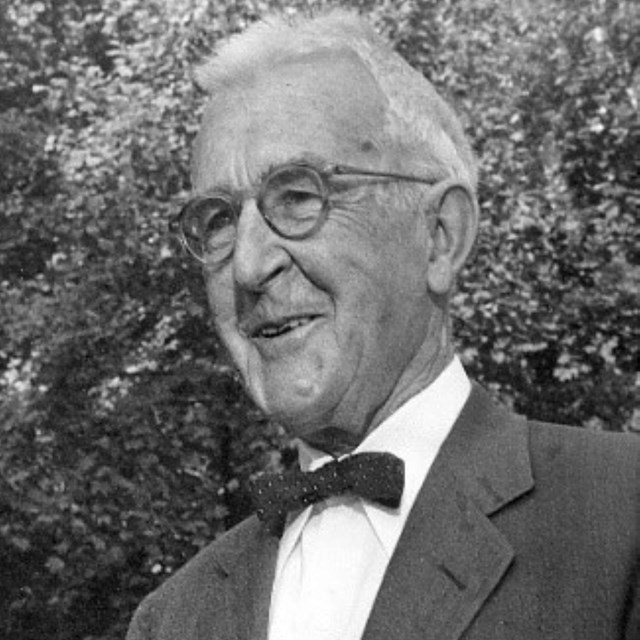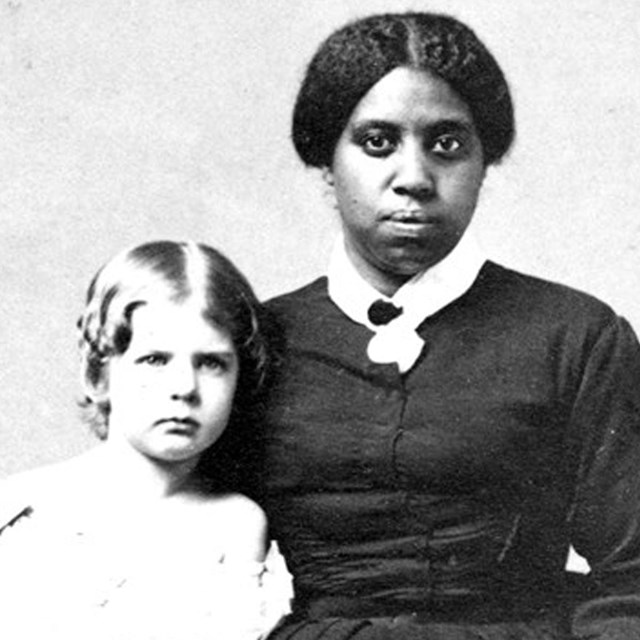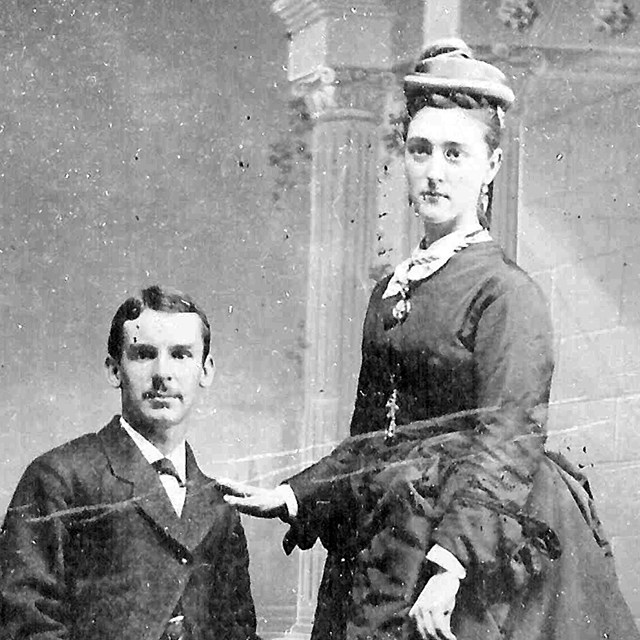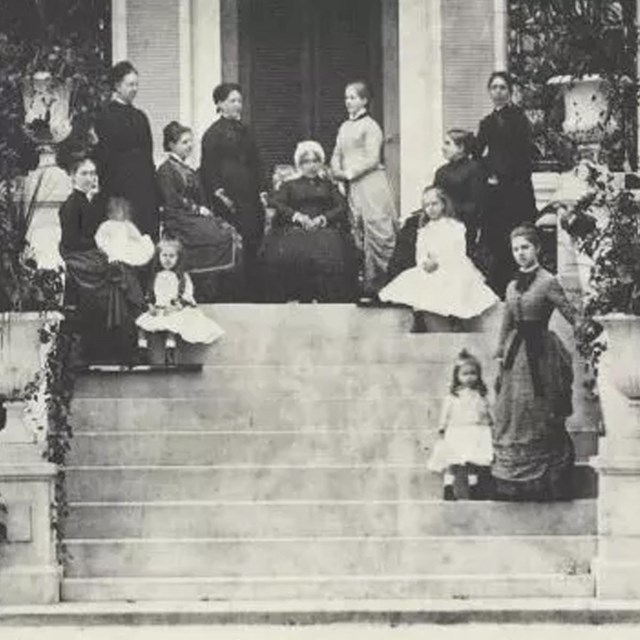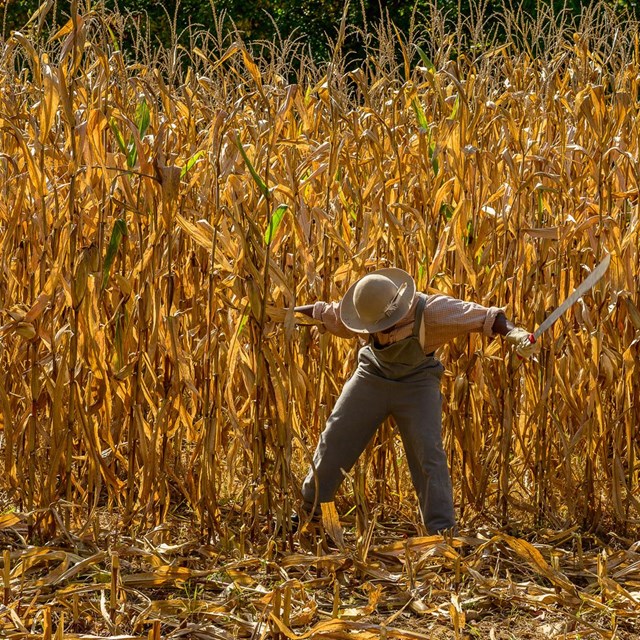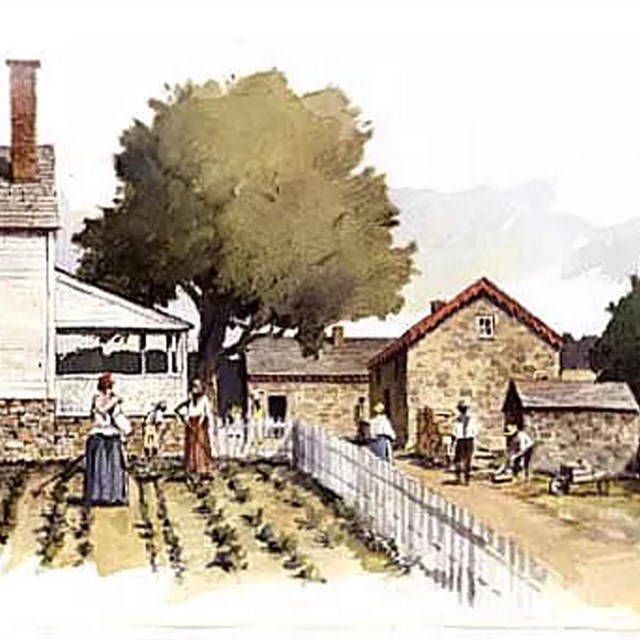
NPS John Ridgely, III (1911-1990), was the eldest son of Louise Roman Humrichouse (1883-1934) and John Ridgely, Jr. (1882-1959). He was born May 11, 1911, in his father’s house, Windy Knoll, at 508 Hampton Lane, which was then a part of the Hampton Estate. He and his siblings, J. Walker H. Ridgely (1915-1976) and Louis Roman Ridgely (1920-1998), spent their childhoods between Windy Knoll and their grandfather’s house at Hampton. John Ridgely, III, graduated from the Gilman School in Baltimore, after which he spent several years working in New York, where he met his future wife, Lillian M. Ketcham, a native of Connecticut. They were married at St. Patrick’s Cathedral on St. Patrick’s Day, March 16, 1935. 
c. 1945 (NPS) Captain John Ridgely died in 1938, and in 1940, John Ridgely, Jr., married Jane Hartman Rodney (1902-1978). At that time, John and Lillian Ridgely moved from Hampton mansion to the Hampton Farm House, a late 18th-century structure on the estate that had served chiefly as a farm overseer’s or tenant farmer’s residence. Plumbing, electricity and other modern amenities had been installed in the Farm House in the early 20th century, but John and Lillian Ridgely were the first Ridgely family members to occupy that house for several generations. They left it in 1942, when both of them joined the armed forces to serve in the war effort. John Ridgely III of Hampton joined the US Army Air Force in 1942. The various orders, permits, and passes he kept help to document his active military service, from driving trucks in Oklahoma to enjoying the Non-Commissioned Officers Club halfway around the world in Port Moresby, Papua, New Guinea. He received training at several US air bases including Stinson Field, Texas, Tinker Field, Oklahoma, and Fort Collins, Colorado, where he received a diploma from AAF Technical School as a Squadron Technical Supply Clerk in March 1943. John was assigned to the 60th Depot Supply Squadron, and by November 1943 was on his way to the South Pacific aboard the USS Mount Vernon (see middle shelf, “V-Mail” letter to his father and “Ancient Order of the Deep” membership card for crossing the Equator.) 
NPS During the New Guinea Campaign, he wrote his uncle and aunt in Baltimore about the conditions he found at air fields on the island including heat, blinding sun, and runways of hard-packed coral sands that were in very frequent use. John returned from active duty in occupied Japan aboard the SS Uruguay in December 1945, arriving at Fort Lawton, Washington just before Christmas. Having previously been awarded battle honors for his participation in the New Guinea Campaign, John Ridgely III received an Honorable Discharge in January 1946 at Fort Meade, Maryland. He brought home not only a wealth of documents and photos, but mementos such as the artillery shell casings. 
NPS John and Lillian Ridgely returned to Baltimore after the war, where they built a house, Spring Hollow, at 710 Hampton Lane on a portion of the Hampton Farm Property. John Ridgely, III, resumed working in the printing business for Arthur Thompson and Company, from which he retired about 1980. Lillian Ridgely pursued her avocation, horticulture. She was a charter member of the Town and Country Garden Club and very active in other local and regional garden club activities as well. In addition, she became a highly-respected wildflower photographer, exhibiting her photographs and giving lectures around the country. In the late 1950s, she produced a catalog of Maryland flora that became a standard reference guide for environmental preservation groups. After Hampton became a National Historic Site in 1948, John and Lillian Ridgely strongly supported the Society for the Preservation of Maryland Antiquities (SPMA) and the National Park Service (NPS) in their efforts to preserve the estate and tell its story. Mr. and Mrs. Ridgely donated numerous Ridgely family artifacts to Hampton NHS, identified persons in old photographs, related their memories of life at Hampton, and supported the fundraising and publicity activities undertaken by the SPMA and the friends group that developed later from it, Historic Hampton, Inc, on behalf of Hampton. The couple had no children. John Ridgely, III, died in 1990, and Lillian K. Ridgely died in 1996. Individuals
Learn More
|
Last updated: August 13, 2024


